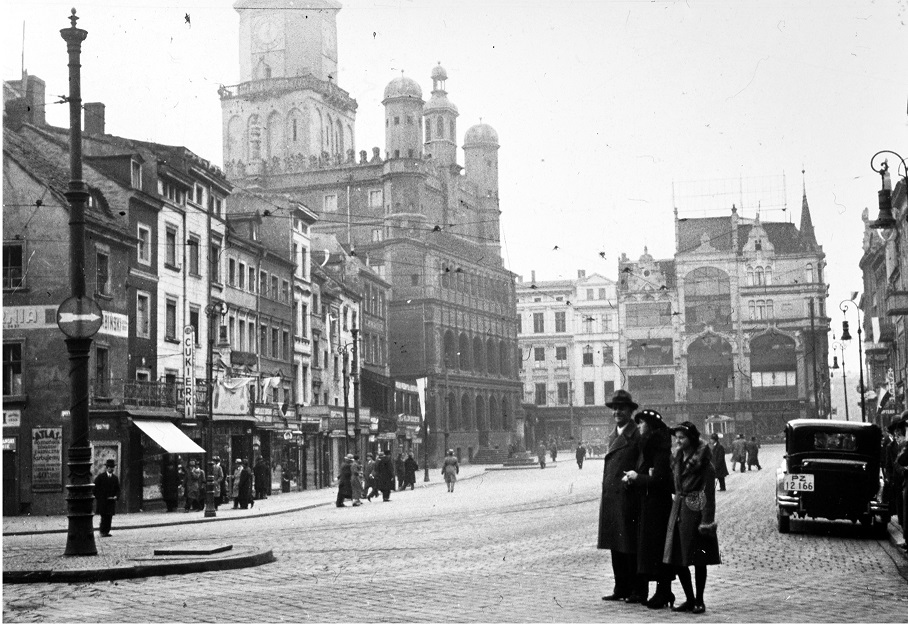Turn-of-the-century Poznań - an exhibition in the Poznań Fotoplastykon

The journey begins in 1888, the year the Prussian city of Posen was struck by one of the largest floods in history. The destruction was massive, wreaking havoc with big swathes of the Old Town. The water level was so high one could travel along ul. Garbary by boat. Plaques on ul. Długa and in the Church of the Corpus Christi in the district of Piaski commemorate the disaster. The height at which they are hung corresponds to the water level during the flood (more than 58 m a.s.l.).
We will then visit Poznań's famed city squares. One of them - Wilhelmsplatz (today's Plac Wolności) - was recognised by the 1870 Náchod monument depicting a lion flanked by four Prussian soldiers. Designed by Cäsar Stenzel, the monument commemorated the battle of Náchod, Bohemia and symbolised the German rule over the Warta. The statue of Chancellor Otto von Bismarck in today's Plac Adama Mickiewicza, unveiled somewhat later, in 1903, had a similar meaning. Both statues raised controversy and were frequently pelted with stones. These symbols of occupier dominance were eventually removed from urban space after the victorious Wielkopolska Uprising. The stereo photographs from this early period have been provided by the University Library of Poznań.
Our next stop is Poznań's inter-war period and one of the city's most distinctive buildings: the Upper Silesian Tower. Built by the partitioner in 1911 (to a design by Hans Poelzig), it was pronounced a priceless gem of Poznań's architecture. The building inspired the movie director Fritz Lang to use it for location shooting of his super-production Metropolis in 1927. The Upper-Silesian Tower did not survive the tragic events of the 20th century. Damaged severely during the bombings of 1944-1945, the building was ultimately demolished in 1955. Today, the site is occupied by Pavilion 11 (commonly known as the "Iglica" or "The Spire").
One other huge historic event was the International Congress of Christ the King held in Poznań on 25-29 June 1937. The celebration was conducted by the papal legate and Poland's Primate August Hlond. The event ended with a great demonstration in honour of Christ the King. It was described in the seventh issue of the Ruch Katolicki magazine: Even on the preceding evening and then early in the morning of event day, forty trains would bring pilgrims from all over the country. Meanwhile, droves of people from less remote areas would stream in on foot.
It is also worth mentioning the collection from which the inter-war stereo photographs presented at the display have originated. They were taken by Stefan Bolesław Poradowski, a Poznań composer, music theorist and educator. Poradowski had a passion not only for music but also for photography, including the three-dimensional variety.
Two-dimensional photographs of today's Poznań by Paulina Węgielnik complete the exhibition. They allow us to see clearly how the capital of Wielkopolska has changed over the last 150 years. They portray its evolution from the late 19th and early 20th centuries, when it was dominated by the Prussians and experienced its pre-World-War-II heyday (as immortalised by Stefan Bolesław Poradowski), until the present day, with a focus on daily hustle and bustle amidst school and work commitments. The Poznań Fotoplastykon provokes reflection not only on how the city has changed but also on its future.
As on previous occasions, the exhibition expands beyond the Fotoplastykon itself. Scores of photos supplied by the National Digital Archive and the Municipal Historic Monument Curator have been placed on the outer shell of the device to complement the three-dimensional display. While the stereo photographs in Poznań's Fotoplastykon show changes in urban fabric and architecture, the two-dimensional ones portray the daily life of the inhabitants of the Wielkopolska's capital.
Marcel Skierski
translation: Krzysztof Kotkowski
Wydawnictwo Miejskie Posnania wishes to thank the National Digital Archive of Warsaw, the University Library of Poznań and the Municipal Historic Monument Curator of Poznań for allowing it to publish iconographic materials free of charge.
- Turn-of-the-century Poznań - an exhibition in the Poznań Fotoplastykon
- Centrum Informacji Kulturalnej (Cultural Information Centre), ul. F. Ratajczaka 44
- 4.09 - 30.11, opening hours: Monday - Friday 10 am - 6 pm, Saturday 10 am - 5 pm, Sunday closed, last admission 1 hour before closing time
- tickets: regular admission - 5 pln, reduced admission - 2 pln, family tickets - 10 pln, group tickets (groups of 10 or more) - 20 pln
© Wydawnictwo Miejskie Posnania 2019






